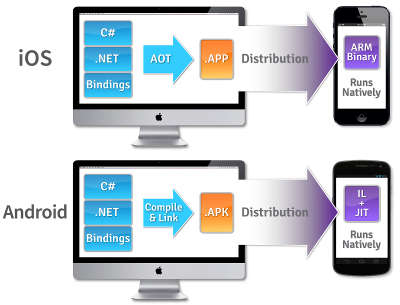| Xamarin Now Free - Does This Change Everything Or Nothing? |
| Written by Mike James |
| Monday, 04 April 2016 |
|
Xamarin has occupied a strange place in the .NET programmer's world - the fact that it existed was exciting, but not quite a fully part of it. Now that Microsoft has completed the purchase of the company, it is fully part of it and this is slightly bewildering.
After so long in a sort of twilight land, Xamarin's software is now fully part of Visual Studio. It is in every edition, including the free Visual Studio Community Edition. What this means is that Xamarin is now free to use for individuals, open source projects, academic research and small teams. What is more important is that, whereas the previous free version had restrictions designed to make sure you bought a licence, there are nw no limits on the product - you can produce any type or size of app you want to and you can target iOS or Android using C# or F#. Xamarin is moving the already open source Mono to the .NET Foundation, under an MIT licence, and open sourcing previously proprietary mobile-specific improvements to the Mono runtime:
All this is welcome but not amazing. What is amazing is the promise to open source the rest of the mobile API in the future: "In addition to these important steps, we are announcing today our commitment to open source the Xamarin SDKs for Android, iOS, and Mac under the MIT license in the coming months. This includes native API bindings and the basic command-line tools necessary to develop mobile apps. It also includes our popular cross-platform native UI toolkit,Xamarin.Forms." It seems that not only will the whole of the Xamarin be free to use to find out how good it is, the whole framework will be open source with a few exceptions related to the tooling.
This places Xamarin's technology right into the mainstream .NET world. The technology is no longer an outsider's take on .NET, but an official Microsoft .NET technology. Now when you open up Visual Studio you can write C#, say, and produce Android, iOS or Windows apps. This seems great, but there are some interesting problems and conflicts. If you opt to produce iOS or Android apps then you can use Xamarin Forms for your UI, but Microsoft wants you to use Windows Universal Apps for Windows 10 apps including Windows phone. If you want to target Windows before Windows 10 then you need to use either WPF or Win32 Win Form apps. In addition we now have Mono and .NET core as two open source versions of .NET. Clearly there is going to have to be some house cleaning and unification of all this code. It is illogical, and slightly ironic, that you are able to use Xamarin Forms for Android and iOS but not for Windows Phone. If Xamarin Forms does come to WIndows Phone then it will also work on Windows 10 generally - making it a direct competitor to Windows Universal Apps. It is good that Xamarin's code is now part of the Microsoft .NET world, but it is a very confusing, messy and wasteful world at the moment.
More InformationRelated ArticlesAstoria Cancellation Confirmed - Devs Advised To Try Xamarin Microsoft Buys Xamarin - About Time Too Microsoft And Xamarin Collaborate To Bring Native iOS and Android To Visual Studio Is Microsoft Going To Revitalise .NET With Xamarin Acquisition?
To be informed about new articles on I Programmer, sign up for our weekly newsletter, subscribe to the RSS feed and follow us on, Twitter, Facebook, Google+ or Linkedin.
Comments
or email your comment to: comments@i-programmer.info |
| Last Updated ( Thursday, 28 April 2016 ) |




